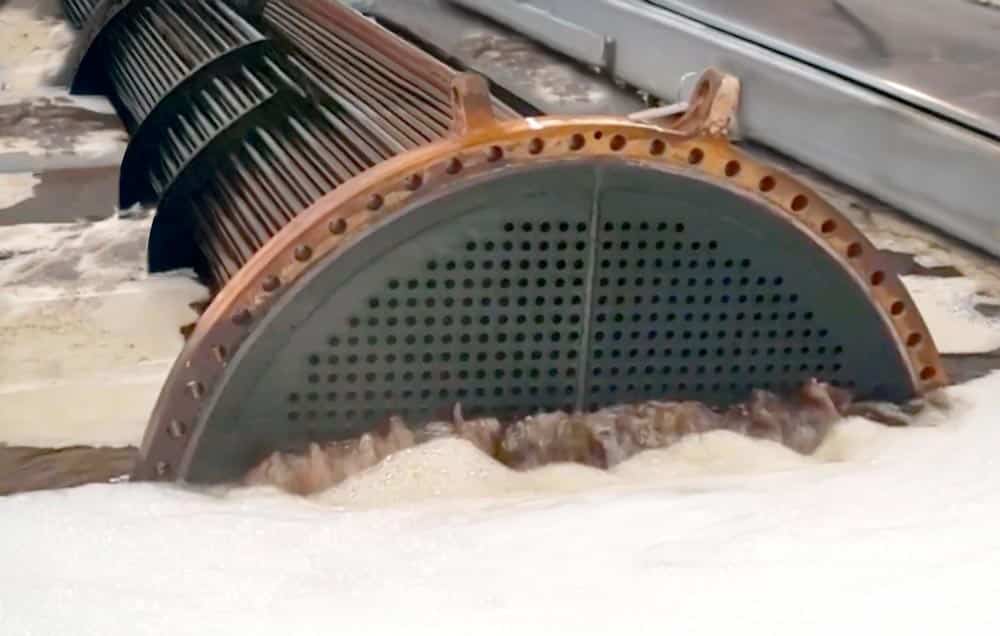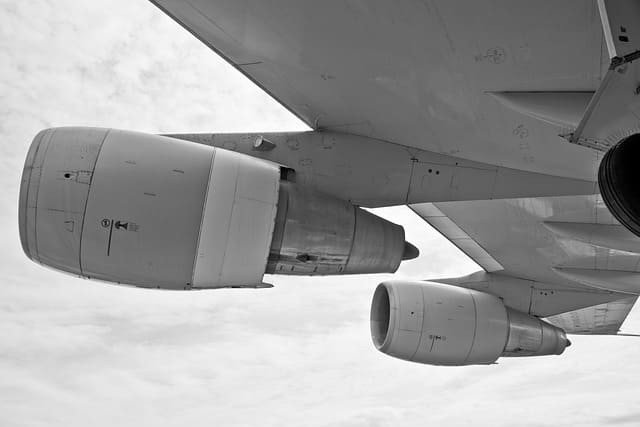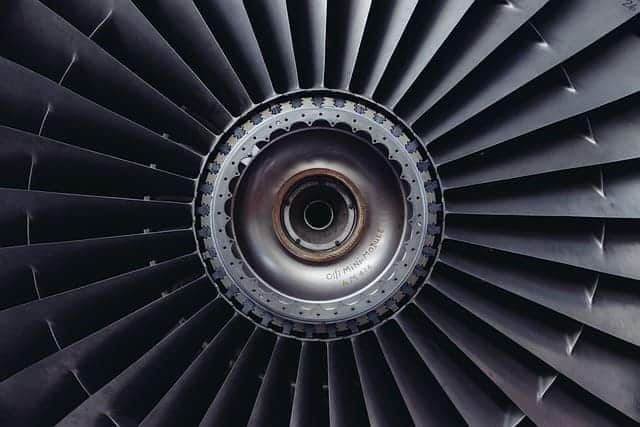News - Ultrasound machines - BRIO

Cleaning methods for heat exchangers
In the energy sector, a heat exchanger is a device designed to transfer heat from one fluid to another without mixing or coming into contact with each other. For example, in a power plant, heat exchangers are essential for transferring heat between different fluids and systems, improving efficiency and reducing emissions. They are used in a variety of applications, including steam generation, water preheating, cooling, and waste heat recovery. The importance of cleaning heat exchangers In heat exchangers, thermal efficiency can be affected by the accumulation of sediment, scale, or organic residue. If energy efficiency decreases, this increases consumption and, therefore, costs. Some studies indicate that a layer of scale just 0.8 mm can reduce system efficiency by up to 25%. This is why heat exchanger cleaning is so important. Challenges in cleaning heat exchangers. As we’ve discussed, cleaning a heat exchanger is essential, but it’s not a simple task. Some of the most common complications when cleaning a heat exchanger are: Limited access and complex geometry Many heat exchangers have highly enclosed internal designs or multiple tubes, fins, or plates, making physical access difficult. This makes conventional methods, such as scraping or manual jetting, ineffective. Furthermore, the areas that

What advantages does ultrasound bring to the stripping of parts?
Benefits of ultrasonic pickling Stripping parts is a fundamental process in the industry for removing surface treatments such as paints, varnishes, and other layers overlaid on the base material. The incorporation of ultrasonic technology has revolutionized the pickling process, offering significant advantages in terms of efficiency, precision, and sustainability. Some of the benefits of using this type of technology are the following: Uniform removal of surface layers Stripping chemicals, combined with high temperature, soften layers of paint, varnish, etc. Ultrasound enhances this effect by providing mechanical action on the part. Ultrasound generates high-frequency waves that produce a phenomenon known as cavitation. This process generates micro-brushing at the molecular level, allowing the paint or varnish layers to be removed evenly across the entire surface of the part. This is true even in complex geometries, cavities, and hard-to-reach areas. Unlike traditional mechanical methods, ultrasonic cleaning ensures a uniform result without damaging the material’s structure. Time savings and faster processing Ultrasonic stripping systems can be up to 80% faster than other traditional methods. The micro-brushing effect produced by ultrasound accelerates the action of the stripping chemicals and makes the process much faster and more efficient. Therefore, stripping time is drastically reduced. Furthermore, BRIO

What is part pickling and how does it work?
What is metal pickling? Stripping is a process used to remove surface coatings such as varnishes, paints, lacquers, and other materials. It is primarily used for maintenance or restoration tasks. It is commonly used for components that have suffered surface wear or when previously painted parts need to be repainted to restore their original appearance or functionality. It is generally not used on delicate or high-precision components, as few of these components have surface coatings, and therefore, it is not necessary to remove them with pickling. On the other hand, the pickling process does not remove contaminants. Although it may remove some, this is not its primary objective. How is metal pickling done and what types of pickling are there? Metal pickling can be performed using different methods, depending on the type of material and the desired result. Some of the most commonly used procedures include: Chemical Stripping: Uses chemicals (acids or solvents) to dissolve layers of paint, varnish, rust, or grease. The procedure involves first cleaning the component, then dipping it in or applying the chemical. The chemical is then left to soak, then removing the residue with pressurized water, a brush, or a jet of air, and drying

What to consider when choosing an ultrasonic cleaning machine for the aeronautical industry?
The aeronautical industry demands the highest cleaning standards to ensure the performance and safety of its components. The accumulation of oils, metal particles, combustion residues, and other contaminants can compromise the functionality of critical parts, such as turbine blades, hydraulic systems, and structural components. In this context, ultrasonic cleaning has emerged as an efficient and safe solution. However, choosing the right machine requires taking numerous factors into account. Below, we present the ones we consider most critical. 7 points to consider when choosing an ultrasonic cleaning machine Machine compatibility with aeronautical components Components in the aeronautical industry are made from advanced materials such as titanium alloys, aluminum, stainless steels, and composites. Ultrasonic cleaning machines must operate with adjustable parameters to ensure the process removes contaminants without compromising the integrity of these materials. Size of the parts to be cleaned The size of the ultrasonic tank must be adapted to the dimensions of the parts to be cleaned. In the aeronautical industry, where components can range from small precision parts to larger structures, it is essential to have modular equipment or customized systems that allow for efficient cleaning of different types of parts. Frequency of cleaning parts When selecting an ultrasonic

Ultrasonic cleaning of composite materials and advanced alloys
In modern industry, composite materials and advanced alloys have revolutionized component manufacturing in sectors such as aerospace, automotive, energy, and medicine. However, their effective cleaning represents a challenge due to their heterogeneous composition and the need to remove contaminants without compromising their integrity. In this context, ultrasonic cleaning technology has become a key solution for ensuring impeccable finishes and efficient maintenance. Challenges of cleaning parts made of composite materials and advanced alloys Composite materials, such as carbon or glass fibers with polymer resins, and advanced alloys, such as titanium or nickel-based superalloys, have unique characteristics that require a precise, non-aggressive cleaning process. Some of the challenges include: Fragilidad estructural: Los materiales compuestos pueden ser sensibles a métodos de limpieza abrasivos o químicos agresivos. Complex geometries: Many parts made from these materials have cavities, internal channels, or textured surfaces that make access difficult using conventional methods. Specific waste: Contaminants such as cutting oils, adhesives, wear particles and oxides must be removed without altering the material properties. Advantages of ultrasonic cleaning in cleaning parts with composite materials Ultrasonic technology uses high-frequency waves to generate microbubbles in a cleaning fluid. These bubbles implode, creating a cavitation effect that loosens dirt even in the

Aeronautical components that benefit from ultrasonic cleaning
What types of components are used for ultrasonic cleaning in the aeronautical industry? The types of components to be cleaned can be quite varied; the most common parts requiring ultrasonic maintenance are engines, turbines, hydraulic and pneumatic systems, brakes, landing gear, electronics, and aircraft manufacturing tools. Engine and turbine components Turbine blades and vanes Fuel injectors Injection valves and nozzles Housings and combustion chambers Exhaust systems These components often accumulate combustion residue, carbon, and oil, which impairs their performance and efficiency. Ultrasonic cleaning removes these impurities without damaging the surfaces or altering their geometry. Hydraulic and pneumatic systems Hydraulic valves and actuators Pumps and fluid lines Couplings and connectors Hydraulic and pneumatic systems require extreme cleanliness to prevent blockages and ensure proper fluid flow. Ultrasonic cavitation removes microscopic particles that could compromise their performance. Landing gear and brake systems Brake discs and pads Shock absorbers and cylinders Bearings and mechanical components Landing gears are exposed to dirt, grease, and environmental contaminants. Ultrasonic cleaning removes residue without the need for complex disassembly, optimizing maintenance. Instrumentation and electronic components Printed circuit boards (PCB) Sensors and transducers Electrical connectors and terminals Cleaning electronic components is essential to prevent failures due to contamination or

